This is the first time in the history of the world that obesity is more prevalent than starvation. As a result, there are millions of people worldwide who are overweight. Many of these persons are attempting to lose weight, very often with only limited success.
BMI Assessment
Obesity is commonly defined as having too much body mass. A BMI (Basic Metabolic Index) which is a ratio of body weight to height is the equation used for establishing weight categories in adults.
BMI: less than 18.5 = Underweight
BMI: 18.5 to 24.9 = Normal
BMI: 25 to 29.9 = Overweight
BMI: 30 to 34.9 = Obese
BMI: Greater than 35 = Morbidly Obese
Childhood obesity is calculated relative to the child’s age. A child younger than two years may be diagnosed with obesity if their BMI is greater than 95% of their peers in the same age category.

Influence of Obesity on Disease
Although BMI has its limitations, it is a simple way to demonstrate obesity related health risks. Greater than normal body weight has direct and indirect effects on many body systems and may increase a person’s risk for certain health conditions such as: Type 2 diabetes; cardiovascular disease; fatty liver disease; kidney disease; pancreatitis and other conditions. The risk is higher for those persons in the higher BMI categories.
There are some groups in which BMI does not accurately reflect fat levels, these include body builders and athletes who have greater muscle mass and may have higher than average BMI scores even though their fat levels are low. It’s also possible to have obesity at a normal weight if your body weight is average but your body fat percentage is high, in which case you may have health risks equal to someone with a higher BMI. However this is generally not the case.
Some providers have also observed ethnic differences in how much extra weight different people can carry before it affects their health. For example people of Asian descent are more likely to have health risks at a lower BMI and people of African descent are more likely to have health risks at a higher BMI.
Another way of assessing obesity is by measuring waist circumference. If you have more fat around your waist, you are statistically more at risk of obesity related diseases. The risk becomes significant when your waist size is more than 35 inches for females or 40 inches for males.
Obesity Development
On the most basic level, obesity is caused by consuming more calories than your body can use. When your body has extra fat that it needs for future use, it converts the extra fat into lipids which it stores in fat cells. As you run out of storage space, the fat cells themselves become enlarged. Large fat cells, apart from increasing obesity, secrete hormones which produce an inflammatory response.
Worldwide obesity has nearly tripled in the last 50 years. The rise has been especially dramatic in lower income countries and lower income groups, where malnutrition is common and there is greater consumption of higher calorie foods with lower nutritional value. As a result of this, obesity now commonly coexists with undernutrition.
Many factors contribute to this. Some factors are individual to you and others are built into the structure of our society.

Obesity Effects
Some ways in which obesity affects your body simply result from the mechanical effects of excessive fat. For example, extra body weight leads to extra pressure on your skeleton and joints. Chemical effects are also at work as chemical changes in your blood are known to increase the risk for diabetes, heart disease and stroke.
Other effects are still not well understood. For example there is an increased risk of cancers associated with obesity. Statistically obesity increases your risk of premature death from many causes.
Together the conditions that result from these combined risk factors are known as metabolic syndrome. They are grouped together because they all tend to reinforce each other. Metabolic syndrome is an important factor in obesity and contributes to many related diseases, including: Type 2 diabetes; Cardiovascular Disease; Fatty liver disease; Kidney disease and Gallstones.
Excess body fat can cause crowding of internal organs and also put stress and strain on your musculoskeletal system. In the case of the respiratory system, it may contribute to asthma; sleep apnea and hypoventilation syndrome. With regard to the musculoskeletal system osteoarthritis; back pain and gout are known to increase.
According to the US Center for Disease Control and Prevention, one in three adults with obesity also has arthritis. Studies have shown that for every five kilograms of weight gain, your risk of knee arthritis increases by 36%. The good news is that together with exercise and weight loss of 10 percent you can significantly reduce arthritis related pain and improve your quality of life.
Obesity is associated indirectly with a decrease in memory and cognition, including a heightened risk of Alzheimer’s disease and dementia; female infertility and pregnancy complications; depression and mood disorders; certain cancers including esophageal, pancreatic, colorectal, breast, uterine and ovarian.
Obesity Treatment
Not every weight loss method works for everyone. Most people have tried to lose weight more than once. Keeping the weight off is just as important as losing it in the first place.
Preventing obesity is generally easier than treating it once it has taken hold. If you have noticed a pattern of recent weight gain in yourself or your child or if you have a family history of obesity, you might want to take steps to intervene sooner rather than later. Examining your habits and making early reasonable changes can help you prevent future obesity and weight loss struggles.
Your approach to weight loss should be based on your general medical profile. As a part of this practice, first concentrate on lifestyle changes such as diet, physical activity and fasting.
The dietary changes you personally need to make in order to lose weight will be individual to you. Some people may benefit from cutting down on portion sizes or snacks between meals. But for others it may be more about changing what they eat. Almost everyone can benefit from eating more fruits, vegetables, whole grains and veggies. These foods tend to be lower in fat and higher in fiber and micronutrients
Some people recommend other approaches such as bariatric surgery and medications of which there are many.

Things that you can do
- Decrease your overall calorie intake.
- Fasting to learn control of eating, decrease caloric intake and obtain its other benefits.
- Stock your home with healthy foods and reduce sweets etc.
- Cultivate overall wellness habits: for example reducing your screen time and going outside for a walk.
- Manage your stress. Overeating may be a reaction to stress.
- Get adequate sleep to keep your hormone levels in check.
- Decrease alcohol intake.
What we do
Why Need To Choose Us?
Standards of Treatment
Infection Prevention
Quality of Care Services
Patient Experience
Well Communication
25+ Years Experience
Introduction
Welcome to Todd Singh MD healthcare
With over 25+ years experiences, working in the healthcare. Want to know more about me check the my long story in short following:
- Long Island University, Brooklyn, New York. B.A Biology
- Ross University School of Medicine, Portsmouth, Dominica. MD Degree. (1988 – 1993).
- Elmhurst Hospital Medical Center, Jackson Heights, New York. Internal Medicine Internship. (1997 – 1998).
- Licenses: New York State, Trinidad & Tobago.
- Columbia Presbyterian Hospital/Harlem Hospital, New York. New York. Radiology Residency (1999 – 2003)
- Hahnemann Hospital, Drexel University, Philadelphia, PA. Neuroradiology Fellowship. (2014 – 2015).
- Veterans Hospital, University of California at Irvine, Long Beach, California. Musculoskeletal Radiology Fellowship. (2015 – 2016).

